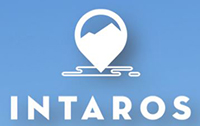| Number | Name | Description |
|---|---|---|
| D1.1 | Initial Requirement Report | The detailed analysis of phenomena and observation requirements for the Arctic region given in this report reveals the following conclusions: |
| D1.10 | Roadmap for a sustainable Arctic Observing System | The INTAROS roadmap builds on the experience and knowledge from the INTAROS consortium comprising more than 300 scientists from 49 institutions in Europe, Asia, and North America.The roadmap describes the way forward to improve and sustain the observing capacity in the Arctic. The roadmap addresses the full data delivery chains for ocean, atmosphere, and terrestrial in situ observations. The… |
| D1.11 | Final Synthesis report | The overall results of INTAROS are summarized for each WP as follows: |
| D1.12 | Collaboration with Arctic Shipping | This report describes the experiences working onboard the Norwegian Coast Guard ship KV Svalbard and the expedition ship Le Commandant Charcot during the INTAROS and CAATEX projects. The Norwegian Coast Guard has supported Norwegian research institutes over many decades and made tremendous contribution to Norwegian polar and ocean research. The report describes complex operations carried out… |
| D1.2 | Data Management Plan V1 | This document is the first version of the Data Management Plan (DMP) for the INTAROS project. The DMP describes how new datasets collected or generated by partners in the frame of the project, will be managed according to guidelines for FAIR data management in H2020. INTAROS will collect new observations and generate high-level data products from different |
| D1.3 | Engagement strategy | The overall objective of INTAROS is to build an efficient integrated Arctic Observation System (iAOS) by extending, improving and unifying existing systems in the different regions of the Arctic. This requires engagement of a broad group of research institutions, educational institutions, operational agencies and stakeholder groups. This document |
| D1.4 | Collaboration establishment | The report describes the collaboration activities conducted in the project until May 2019, including connections to various other projects, infrastructures and networks of importance for Arctic observing. The report is part of the process to develop the INTAROS Roadmap. |
| D1.5 | Report on stakeholder interaction in year 2 and 3 | An overview of information, products and services requested by users representing primarily the private commercial sector has been collected via INTAROS user survey supplemented with results from similar surveys performed by other projects and organisations together with information obtained by INTAROS consortium members in dialog with relevant user at meetings, workshops and conferences. |
| D1.6 | Data Governance Framework (including updated Data Management Plan) | This document contains a description of the Data Governance Framework for the INTAROS project, with an updated version of the Data Management Plan (DMP). The Data Governance Framework defines the procedures for how data management is carried out in the project, including the planning, conducting and monitoring the preparation and distribution of data collections. The DMP describes how new… |
| D1.7 | Report on stakeholder interaction in year 4 and 5 | The stakeholder interaction activities during the last two years have focused on: |
